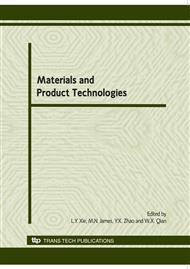p.625
p.630
p.635
p.640
p.645
p.650
p.655
p.660
p.665
A Hybrid Method for Determining the Dynamic Stresses of Railway Vehicle
Abstract:
On the basis of the idea that the displacement response of the structure can be expressed as superposition of normal modes of vibration multiplied by corresponding time-dependent modal coordinate, the strain response of the same structure under the same loading condition can also be regarded as a superposition of strain modes multiplied by modal coordinates, this paper presents a hybrid method for determining the dynamic stresses of railway vehicle based on the combination of experiment and numerical simulation. The calculation formulas based on strain mode superposition principle is deduced in detail. The numerical experiment shows that the dynamic stress time history can be obtained by the proposed method expediently and accurately. In addition, to meet the demand of fatigue engineer of the vehicle bogie, a software system was developed, which has a friendly, open and easily removable interface and is valuable for practical use.
Info:
Periodical:
Pages:
645-649
Citation:
Online since:
June 2010
Authors:
Keywords:
Price:
Сopyright:
© 2010 Trans Tech Publications Ltd. All Rights Reserved
Share:
Citation:


